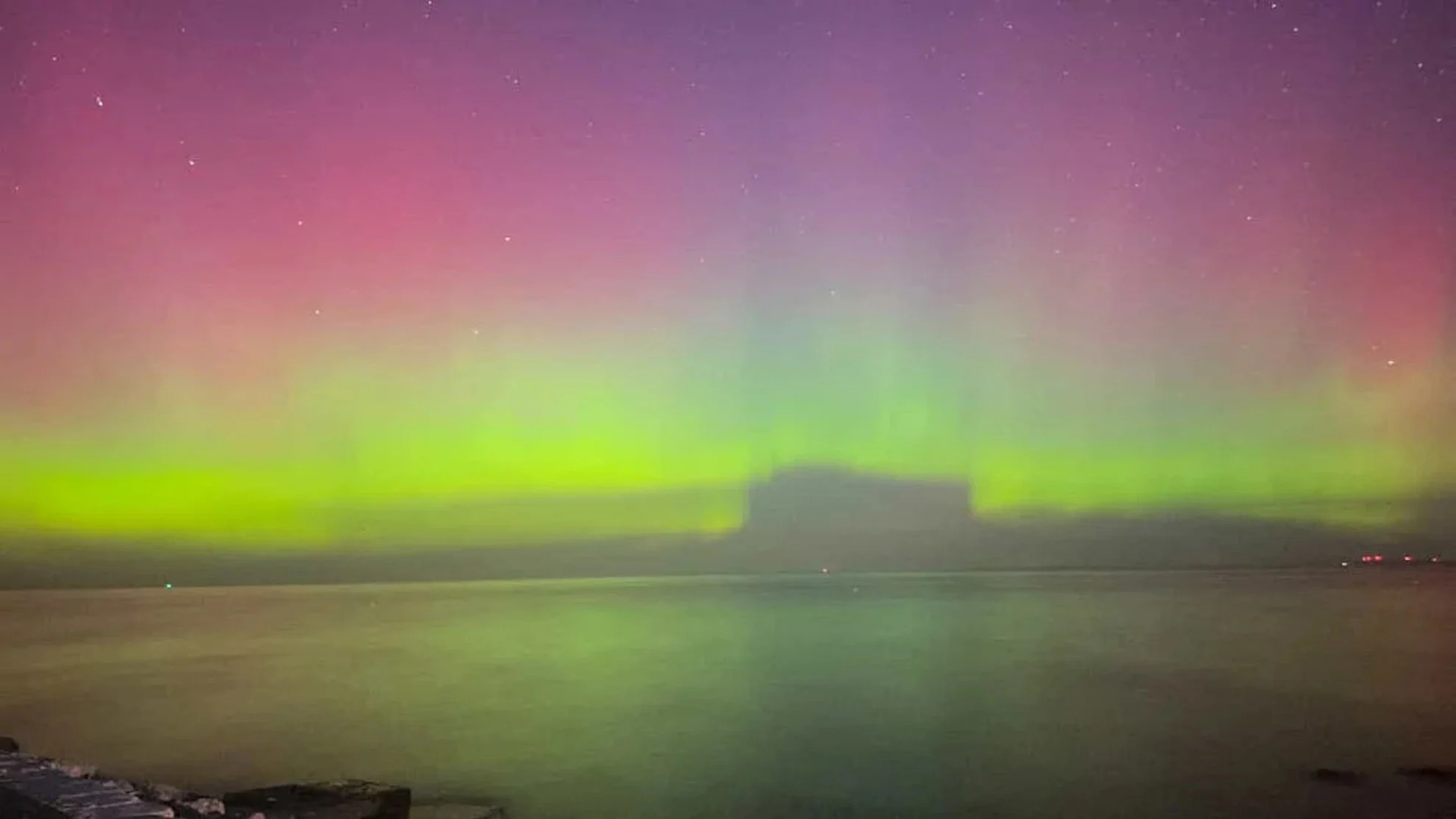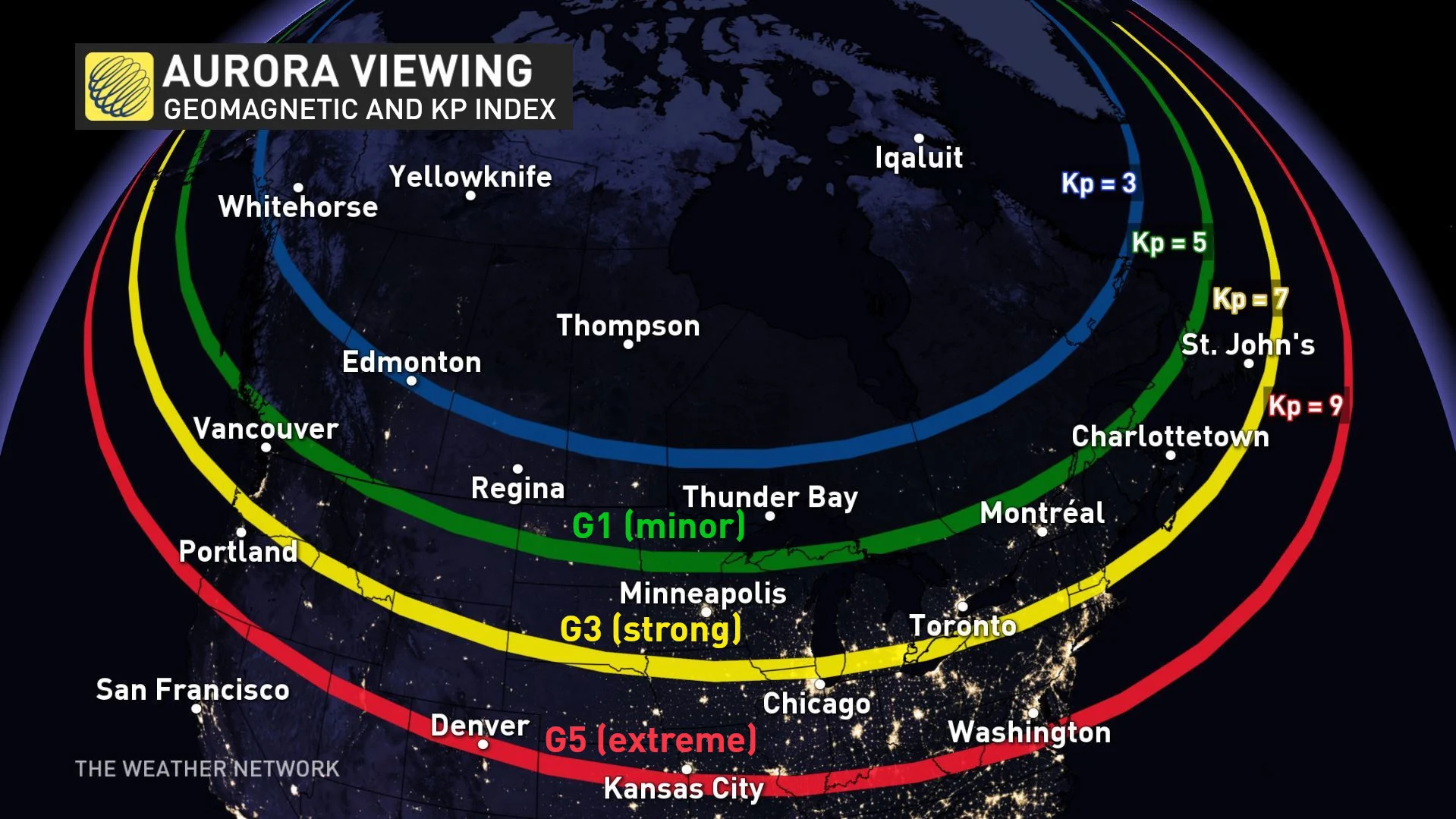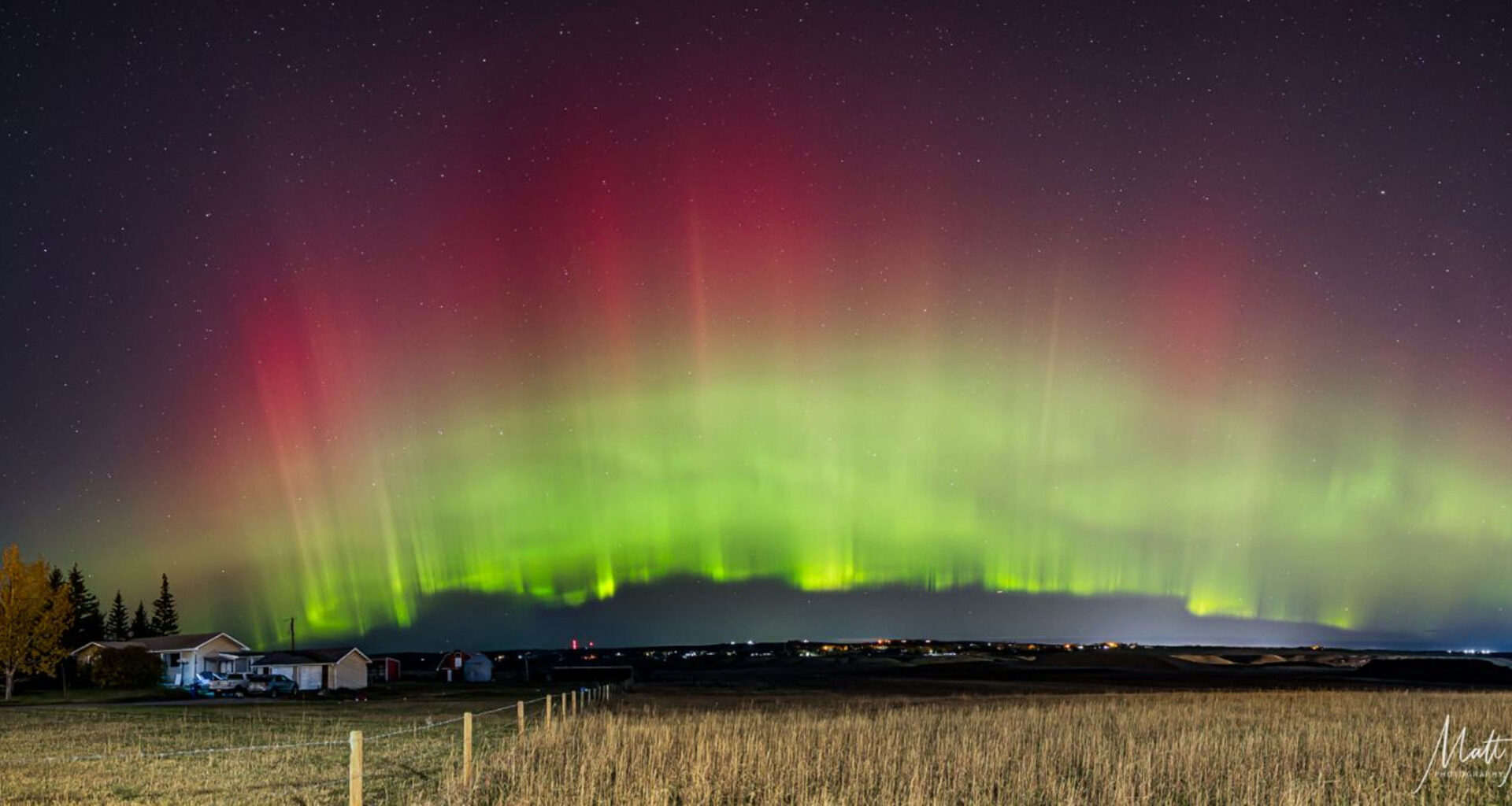
This display of the Aurora Borealis shone over Leamington, ON, on September 14, 2025. (Michael Vincent Ledesma/UGC)
This could be due to our proximity to the September Equinox, when so-called ‘equinox cracks’ can open up holes in the geomagnetic field. That often results in Northern Lights displays that are much brighter and that extend much farther to the south than they would due to similar space weather impacts at other times of the year.
NOAA SWPC mentions that brief periods of G2 (moderate) geomagnetic storm strength could be seen as well.
With the timing of the forecast, as these storms are predicted to occur between 5 p.m. and 1 a.m. EDT, that would favour the eastern half of Canada for any aurora displays. At G1 or G2 geomagnetic storm strength, the Northern Lights tend to remain over northern or central regions of Atlantic Canada, Quebec, and Ontario.

CAPTURE THE NORTHERN LIGHTS: Taking pictures of the Aurora Borealis is much simpler than you think
However, given that the auroras typically appear between 100 and 300 kilometres above the ground, it is possible to spot them from quite a distance away. Observers watching from under clear, dark skies, far from urban light pollution may still catch them along the northern horizon. Plus, brief pulses of activity could push the displays farther south, making them easier to see.
(Thumbnail image shows the Northern Lights, as captured by Matt Melnyk, north of Calgary on October 6, 2024)
Watch below: What causes the Northern Lights?

